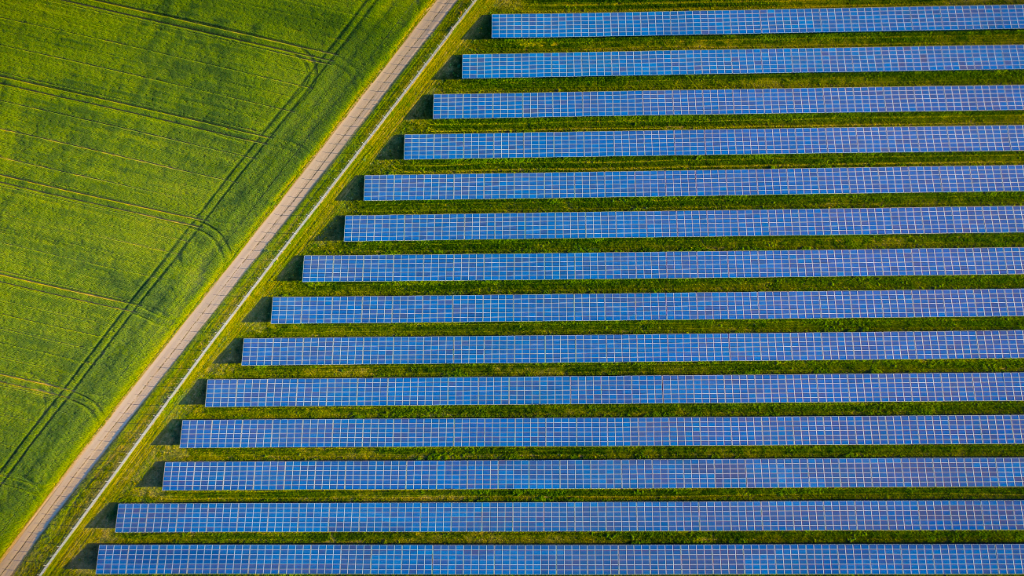
Getting solar power into portfolios
A recent IEA report highlighted two key challenges to solar investment: China’s dominance in the space, and volatile profitability. Solar energy forms a key part of net-zero energy transition and is an obvious first choice for investors interested in the theme. However, a recent IEA report highlighted the challenges around solar investing, linked to China’s dominance and profitability concerns. Getting solar into portfolios isn’t straightforward, with investors choosing several different routes.
Solar energy forms a key part of net-zero energy transition and is an obvious first choice for investors interested in the theme. However, a recent IEA report highlighted the challenges around solar investing, linked to China’s dominance and profitability concerns.
Getting solar into portfolios isn’t straightforward, with investors choosing several different routes to make this happen in a way that works for both risk and return.
Ross Grier is managing director at NextEnergy Capital, which oversees a solar fund classified as Article 9 under the Sustainable Finance Disclosure Regulation (SFDR), defining it as a fund motivated and centred around ESG principles. As an infrastructure asset owner, NextEnergy generally deals with large-scale investors, many of which are institutional.
This is reflected in his long-term holding period, a common trait in infrastructure investing: “We're a long-term asset owner, so we will own this thing right the way through to the end of its operational life. This is up to 50 years’ worth of remaining operational asset life, so what we're not looking to do in this fund is a short-term yield compression and an exit.”
From the institutional perspective, Oskar Tijs, senior portfolio manager for sustainable equity at the Netherlands-based NN Investment Partners (NNIP), has identified the solar inverter segment as a route of access.
This involves investing in companies that have developed so-called Module-Level Power Electronics solutions that increase the power output efficiency of a solar power system using proprietary technology protected by patents as a promising area of investment. Tijs argues that these companies can grow even faster than the solar market in general and earn attractive and relatively consistent returns on capital.
“We are looking for the winners in the value chain that offer both growth and superior returns on capital as they have a strong economic or competitive advantage”, says Tijs.
Greater interest in net zero, and sustainable investing in general, means solar is gaining attention from a larger audience of investors. As a result, solar investments are now increasingly featuring in private equity portfolios. In June 2022, S&P Global Market Intelligence found that private equity investment in renewable energy had surged over six months by 144%.
The research found $4.89bn of private equity capital had been committed to renewable energy across 33 transactions, with solar a key beneficiary.
Eli Aheto is a managing director on the BeyondNetZero team at private equity firm General Atlantic. Before joining BeyondNetZero, Aheto led investments in renewable energy, mobility and agricultural technology at Virgo Investment Group.
“Our approach [at General Atlantic] is to find businesses that are enabling penetration while reducing the costs and the frictions. What appeals is using solar in a market where it's economically very attractive, but yet to be fully developed”, he says.
As an example of General Atlantic activity in the solar power sector, Aheto points to the firm leading a $260m raise in Series D funding for Sun King, the largest provider of solar energy products for off-grid homes in Africa and Asia.
[In 2014] solar was a tree-hugging position. That conversation has fundamentally changed over the last decade and particularly in the last year or two.
Solar’s profitability concerns
The solar industry is still developing with the IEA report warning investors of volatility around profits in the sector, resulting in several bankruptcies despite policy support. The report even went so far as to claim that bankruptcy risk and low profitability could slow the pace of clean energy transitions if companies are unwilling to invest because of low returns or are unable to withstand sudden changes in market conditions.
However, in 2021, integrated companies with a high risk of bankruptcy operated 15% of global solar PV production capacity, down from 26% in 2018.
Grier is upbeat for the future of solar: “Starting out in 2014, NextEnergy was one of the few in the space doing solar at utility scale at the time. Back then it was a tree-hugging position, where we were fighting for an angle. That conversation has fundamentally changed over the last decade and particularly in the last year or two.
“Now there is a much stronger push towards net zero from governments, and in the UK there is pressure to decouple from the hydrocarbons we import from unfriendly nations such as Russia. Solar is one of the very few technologies that can scale rapidly to achieve both goals.”
China’s dominance in solar
Chinese dominance in manufacturing sectors has caused a headache for investors around the world and not least in the solar industry. As an example, according to the IEA report, China currently accounts for 97% of global manufacturing capacity for PV-grade silicon wafer manufacturing, a rise from its already-high share of 80% in 2010.
As to whether Chinese dominance in the manufacturing side of solar presents issue, Martin Todd, lead portfolio manager of the Sustainable Global Equity strategy at Federated Hermes, says: “It to a large extent precludes us from buying equipment names due to questions around human rights, aggressive domestic competition compressing returns, and tariff complexities in selling into the key US Market.”
The stance of Tijs at NNIP can be seen in many ways to echo this standpoint, as he notes the business is not currently invested in Chinese solar companies, instead seeking opportunities with businesses boasting higher ESG credentials in other countries.
“A few Chinese companies have developed a superior scale in solar panel and glass production respectively, and earn pretty attractive returns on capital as a result”, admits Tijs.




